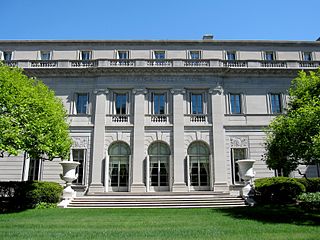
The Frick Collection is an art museum in New York City. Its permanent collection features Old Master paintings and European fine and decorative arts, including works by Bellini, Fragonard, Goya, Rembrandt, Turner, Velázquez, Vermeer, and many others. The museum was founded by the industrialist Henry Clay Frick (1849–1919), and its collection has more than doubled in size since opening to the public in 1935. The Frick also houses the Frick Art Reference Library, a premier art history research center established in 1920 by Helen Clay Frick (1888–1984).

The Barber Institute of Fine Arts is an art gallery and concert hall in Birmingham, England. It is situated in purpose-built premises on the campus of the University of Birmingham.
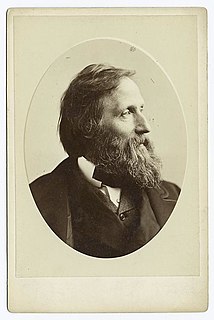
Daniel Huntington was an American artist who belonged to the art movement known as the Hudson River School and later became a prominent portrait painter.

John Quidor was an American painter of historical and literary subjects. He has about 35 known canvases, most of which are based on Washington Irving's stories about Dutch New York, drawing inspiration from the Hudson Valley and from such English painters as William Hogarth, Isaac Cruikshank, James Gillray, Joseph Wright of Derby, and George Morland.

Fitz Henry Lane was an American painter and printmaker of a style that would later be called Luminism, for its use of pervasive light.

George Henry Boughton was an Anglo-American landscape and genre painter, illustrator and writer.

Robert Feke was an American portrait painter born in Oyster Bay, Long Island, New York. According to art historian Richard Saunders, "Feke’s impact on the development of Colonial painting was substantial, and his pictures set a new standard by which the work of the next generation of aspiring Colonial artists was judged." In total, about 60 paintings by Feke survive, twelve of which are signed and dated.

Henry Inman was an American portrait, genre, and landscape painter.

John Ottis Adams was an American impressionist painter and art educator who is best known as a member of the Hoosier Group of Indiana landscape painters, along with William Forsyth, Richard B. Gruelle, Otto Stark, and T. C. Steele. In addition, Adams was among a group that formed the Society of Western Artists in 1896, and served as the organization's president in 1908 and 1909.
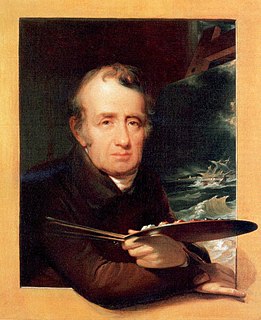
Thomas Birch, was an English-born American portrait and marine painter.

Colin Campbell Cooper, Jr. was an American Impressionist painter, perhaps most renowned for his architectural paintings, especially of skyscrapers in New York City, Philadelphia, and Chicago. An avid traveler, he was also known for his paintings of European and Asian landmarks, as well as natural landscapes, portraits, florals, and interiors. In addition to being a painter, he was also a teacher and writer. His first wife, Emma Lampert Cooper, was also a highly regarded painter.
William Henry Gerdts Jr. was an American art historian and professor of Art History at the CUNY Graduate Center. Gerdts was the author of over twenty-five books on American art. An expert in American Impressionism, he was also well known for his work on nineteenth-century American still life painting.
The New York Art Resources Consortium (NYARC) consists of the research libraries of three leading art museums in New York City: The Brooklyn Museum, The Frick Collection, and The Museum of Modern Art. With funding from The Andrew W. Mellon Foundation, NYARC was formed in 2006 to facilitate collaboration that results in enhanced resources for research communities. Called a groundbreaking partnership, NYARC also provides a framework for collaboration among art research libraries.

The Lenox Library was a library incorporated and endowed in 1870. It was both an architectural and intellectual landmark in Gilded Age–era New York City. It was founded by bibliophile and philanthropist James Lenox, and located on Fifth Avenue between 70th and 71st Streets on the Upper East Side of Manhattan. Renowned architect Richard Morris Hunt designed the building, which was considered one of the city's most notable buildings, until its destruction in 1912.
Sedrick Ervin Huckaby (1975) is an American artist known for his use of thick, impasto paint to create murals that evoke traditional quilts and his production of large portraits that represent his personal history through images of family members and neighbors. Huckaby has worked with images from quilts for many years, moving them from background components of portraits into the subject of his work. He was interviewed about his quilt-influenced abstract work in a podcast for Painters Table. His work is on display at the San Francisco Museum of Modern Art, the Whitney Museum of American Art, the Museum of Fine arts in Boston, the Minneapolis Institute of Art, The Art Institute of Chicago, and the Nasher Museum of Art at Duke University.

Expulsion from the Garden of Eden was painted in 1828 by English-born American painter Thomas Cole. It belongs to the collection of the Museum of Fine Arts, Boston and is on display in their Waleska Evans James Gallery. This landscape painting exemplifies the style of the Hudson River School, which was a group of American landscape painters that Thomas Cole is credited with founding. On the lower left part of the cliff, Cole signed his name as "T Cole".

Valley of the Yosemite is a painting by Albert Bierstadt that was completed in 1864. Initially associated with the Hudson River School, Bierstadt rose to prominence for his paintings of the Rocky Mountains, which established him as one of the best painters of the western American landscape. His later paintings of Yosemite were also received with critical acclaim and public praise.

Marquis de Lafayette was painted in 1825 by Samuel Morse. Mostly known for his creation of the electric telegraph, Morse was also an artist. Morse was a Professor of Painting and Sculpture at the University of the City of New York.
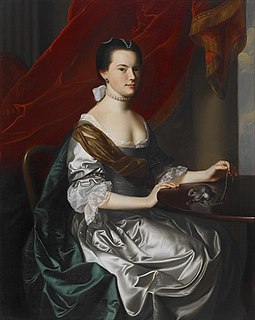
Mrs. Theodore Atkinson Jr. is a portrait painting by John Singleton Copley. Copley completed the painting in 1765. The painting is now housed in the Crystal Bridges Museum of American Art.
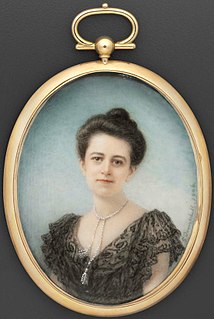
Martha Catherine Codman Karolik was a philanthropist and American art collector. She donated three major collections of early American furniture, paintings, and prints and drawings to the Boston Fine Art Museum which built a new wing to host it.



















